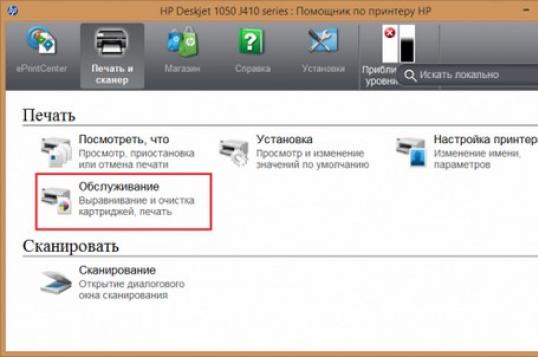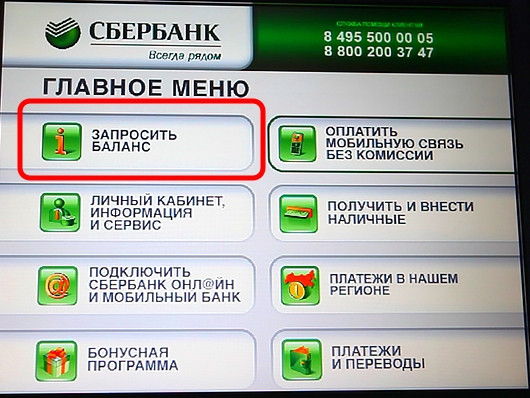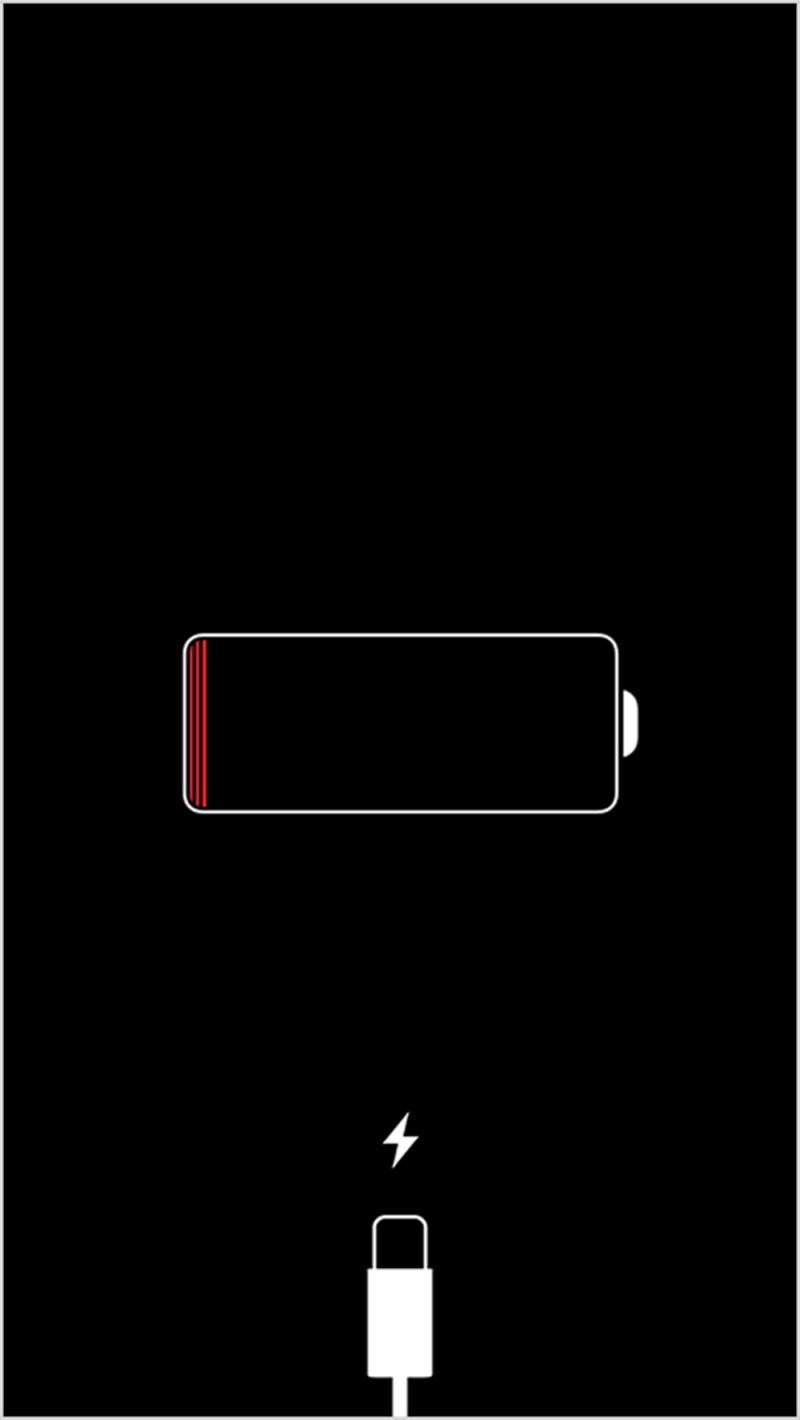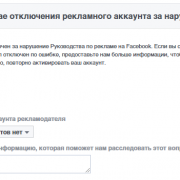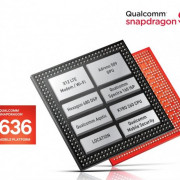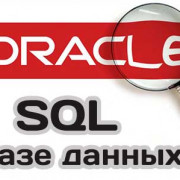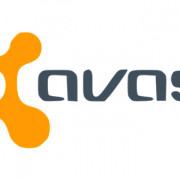Malwarebytes anti-malware premium 4.1.2.73 + ключик активации 2019
Содержание:
- How do I protect myself from adware?
- Возможности Malwarebytes Anti-Malware Free
- Классификация вредоносных программ
- В словаре Словарь иностранных слов
- What is spyware?
- How can I tell if my iPhone or iPad has malware?
- Mac spyware
- Источник угрозы
- Product Guide
- How do I remove spyware?
- Безопасность Malware
- Do mobile devices get malware?
- How Malwarebytes Premium protects you
- An ounce of prevention vs. a pound of cure
- Анализ риска
- All about spyware
- Что такое Malware и почему его нужно удалять
- Как защититься от Malware и хакеров
- Who does malware target?
- Функционал Malware
- ВИДЕО: Сотрудники МЧС взламывают дверь
- Do Macs get malware?
- Beware of Greeks bearing gifts
How do I protect myself from adware?
Finally, even before all the above precautions, download a reputable cybersecurity program for your PC or mobile phone. Perform scans frequently, and keep your updates, well, up to date. Of course, we recommend any of our Malwarebytes family of anti-malware products as a prudent measure: Malwarebytes for Windows, Malwarebytes for Mac, Malwarebytes for Android, Malwarebytes for Chromebook, and Malwarebytes for iOS. By arming yourself with knowledge, and protecting yourself with a robust cybersecurity program, you can take the steps necessary for an adware-free life online.
See all our reporting on adware
at Malwarebytes Labs.
Возможности Malwarebytes Anti-Malware Free
- Удаление вредоносных программ как автоматически, так и в ручном режиме;
- Интеллектуальный эвристический анализ помогает удалять не явные вредоносные объекты;
- Программа обнаружения отличается качественными анти шпионскими модулями;
- В бесплатной версии, имеется встроенный блокировщик подозрительных веб-ресурсов;
- Быстрое сканирование системы с настраиваемым списком игнорирования;
- Реализована защита режиме реального времени — технология Real Time Protection;
- Способность работать в ускоренном режиме;
- Удаление вредоносного ПО в реальном времени;
- Эффективное помещение инфицированных файлов в карантин с последующей опцией восстановления.
Преимущества
- Поддерживается любая актуальная операционная система Windows, начиная от XP, Vista, заканчивая Windows 10;
- Антивирусная программа весьма быстро обнаруживает и удаляет вредоносные приложения;
- Современный и простой интерфейс, имеет русский язык оболочки;
- Возможность настройки для обеспечения максимально оптимизации и производительности;
- Отсутствуют какие-либо конфликты, если на ПК установлены другие антивирусы;
- Отличная система поиска и удаления червей, троянов и различного вредоносного программного обеспечения;
- Содержит передовую технологию Malwarebytes Chameleon, которая препятствует отключению антивируса сложными угрозами;
- В комплект с Malwarebytes Anti Malware Free Antivirus Software входят дополнительные утилиты;
- Антивирусные сканеры и базы сигнатур, стабильно обновляются с официального сайта Malwarebytes Corporation;
- Malwarebytes Anti Malware рекомендуют специалисты по информационной безопасности PC, Mac и других авторитетных ресурсов.
Недостатки
Классификация вредоносных программ
Ниже перечислены основные виды вредоносных программ.
- Агенты ботнетов. Ботнетом называется группа зараженных компьютеров, получающих команды от злоумышленника; за прием и исполнение этих команд отвечает соответствующая вредоносная программа. Такая сеть может насчитывать от нескольких единиц до миллионов компьютеров, она также называется зомби-сетью.
- Эксплойты — хакерские утилиты, предназначенные для эксплуатации уязвимостей в программном обеспечении.
- Бекдоры — программы для удаленного подключения к компьютеру и управления им.
- Компьютерные вирусы. Вирусом принято называть программу, которая внедряет свой код в другие приложения («заражает» их), так что при каждом запуске инфицированного объекта этот код исполняется.
- Руткиты — средства скрытия вредоносной деятельности (например, другие приложения не смогут обнаружить файлы, принадлежащие нежелательному ПО).
- Сетевые черви — вредоносные программы с самой разной функциональной нагрузкой, которые способны самостоятельно распространяться по компьютерным сетям.
- «Троянские кони» («трояны») — широкий класс вредоносных объектов разнообразного назначения, которые обычно не имеют собственного механизма распространения (т.е. не могут заражать файлы или размножать свои копии через сеть). Название произошло от ранней тактики их проникновения — под видом легитимной программы или в качестве скрытого дополнения к ней.
В особую группу можно выделить вымогатели и шифровальщики (ransomware). Сценарий работы таких вредоносных программ состоит в том, что они каким-либо способом блокируют доступ пользователя к его данным и требуют выкуп за разблокировку.
В словаре Словарь иностранных слов
What is spyware?
No big surprise—spyware is sneaky. It finds its way on to your computer without your knowledge or permission, attaching itself to your operating system. You might even inadvertently permit spyware to install itself when you agree to the terms and conditions of a seemingly legitimate program without reading the fine print.
Whatever way spyware manages to get on your PC, the method of operation is generally the same—it runs quietly in the background, maintaining a secret presence, collecting information or monitoring your activities in order to trigger malicious activities related to your computer and how you use it. And even if you discover its unwelcome presence on your system, Spyware does not come with an easy uninstall feature.
Block spyware from tracking your activity
Remove and prevent spyware from stealing your sensitive data. Try Malwarebytes Premium free for 14 days.
“Spyware runs quietly in the background, collecting information.”
How can I tell if my iPhone or iPad has malware?
If your smartphone’s name begins with a lower-case “i,” then pat yourself on the back, because
malware is not a significant issue on the iPhone. That is not to say it doesn’t exist, but it’s extremely rare. In
fact, suffering a malware infection on an iPhone mostly only happens in two extraordinary circumstances.
“While outright malware infections are unlikely, using an iPhone doesn’t protect you at all against
scam phone calls or scam text messages.”
The first consists of a targeted attack by a nation-state-level adversary—a government that has either created or
purchased at a cost of millions of dollars a piece of malware engineered to take advantage of some obscure security
hole in the iOS. Don’t be shocked, because all devices have some sort of vulnerability. To be sure, Apple has
done a fine job of securing iOS, even preventing any apps (including security software) from scanning the phone or
other apps on the device’s system. That’s why it’s so expensive to engineer malware that installs
its code for whatever kind of remotely executed activity the offending nation-state needs.
One particularly
noteworthy instance happened in 2016 when an internationally recognized human rights defender, based in the
United Arab Emirates (UAE), received SMS text messages on his iPhone promising “new secrets” about
detainees tortured in UAE jails. The targeted recipient was invited to click on an included link. He didn’t,
but instead sent the message to cybersecurity researchers, who identified it as containing an exploit that would have
turned the activist’s phone into a digital spy.
The second instance is when a user makes an iPhone vulnerable by means of jailbreaking, which removes the
restrictions and limitations Apple imposes, chiefly to ensure that software apps can only be installed from the App
Store. Apple carefully vets the app developers it carries, even though malware piggybacking on a legitimate app has
happened.
One more point. While outright malware infections are unlikely, using an iPhone doesn’t protect you at all
against scam phone calls or scam text messages. If you tap a link in a message from an unknown source (or someone you
know who’s being impersonated, or “spoofed”), it could send you to a site that asks for your login
and other personal information. So there are still plenty of ways that you can become a victim. Always proceed with
caution.
Mac spyware
Spyware authors have historically concentrated on the Windows platform because of its large user base when compared to the Mac. However, the industry has seen a big jump in Mac malware since 2017, the majority of which is spyware. Although spyware authored for the Mac has similar behaviors as the Windows variety, most of the Mac spyware attacks are either password stealers or general-purpose backdoors. In the latter category, the spyware’s malicious intent includes remote code execution, keylogging, screen captures, arbitrary file uploads and downloads, password phishing, and so on.
“The industry has seen a big jump in Mac malware in 2017, the majority of which is spyware.”
In addition to malicious spyware, there’s also so-called “legitimate” spyware for Macs. This software is actually sold by a real company, from a real website, usually with the stated goal of monitoring children or employees. Of course, such software is a two-edged sword, as it’s very often misused, providing the average user with a way of accessing spyware capabilities without needing any special knowledge.
Источник угрозы
Самые опасные и сложные вредоносные программы создаются на заказ государственными спецслужбами или связанными с ними группами киберпреступников. Такие объекты имеют ярко выраженную специфику и направлены на конкретную жертву или группу жертв. Целью их работы могут быть сбор и кража секретных данных либо прямое вредительство.
Однако большинство вредоносных программ создается рядовыми злоумышленниками, не связанными с организованной киберпреступностью или спецслужбами. Внедрив свои разработки на компьютер жертвы, они могут красть данные для доступа к счетам в банках, выполнять с зараженного устройства сетевые атаки, вымогать выкупы, размещать рекламу сомнительной продукции или рассылать спам. Источником распространения вредителей являются мелкие преступники, похищающие логины, пароли и другую личную информацию (например, аккаунты участников онлайн-игр) с целью несанкционированного использования или продажи.
Внедрять вредоносные программы могут исследователи, находящиеся в процессе изобретения иных способов заражения, противодействия антивирусным продуктам. Цель деятельности этих программистов состоит не в получении выгоды, а в изучении компьютерной среды и проверке своих идей.
Product Guide
How do I remove spyware?
If your spyware infection is working as designed, it will be invisible unless you’re technically savvy enough to know exactly where to look. You could be infected and never know. But if you suspect spyware, here’s what to do.
- The first order of business is to make sure your system has been cleaned of any infection so that new passwords are not compromised. Get yourself a robust cybersecurity program with a reputation for aggressive spyware removal technology. Malwarebytes, for example, thoroughly cleans up spyware artifacts and repairs altered files and settings.
- After you have cleaned your system, think about contacting your financial institutions to warn of potential fraudulent activity. Depending on the compromised information on your infected machine, and especially if it is connected to a business or enterprise, you may be required by law to report breaches to law enforcement and/or make a public disclosure.
- If stolen information is sensitive in nature or involves the collection and transmission of images, audio, and/or video, you should contact local law-enforcement authorities to report potential violations of federal and state laws.
- One last thing: Many purveyors of identity theft protection advertise their services to monitor for fraudulent transactions, or to place a freeze on your credit account to prevent any form of activity. Activating a credit freeze is definitely a good idea. If you’re offered free identity theft monitoring as part of the settlement from a data breach, there’s no harm in signing up. However, Malwarebytes advises against purchasing identity theft protection.
“Many purveyors of identity theft protection advertise their services to monitor for fraudulent transactions…”
Безопасность Malware
Однозначным плюсом Malware является хорошая репутация его производителей. Например, антивирус отметил в своём рейтинге журнал «PCmag». Так, он занял 2-е место в категории “Лучший антивирус для дома за 2019-й год”. Также Malwarebytes назвали лучшей компанией по обеспечению безопасности. Их корпоративный антивирус признали “Лучшим решением для бизнес-безопасности” Computing Security Awards за 2017-й год. Кроме того, в самой антивирусной программе нет функции передачи подозрительных файлов в облачный сервис провайдера.
Тем не менее, и у Malware есть свои слабости. К примеру, уязвимости были обнаружены в ходе одного из исследований антивирусных программ. Malware вошёл в число сервисов, в которых были обнаружены потенциально опасные проблемы.
Do mobile devices get malware?
Malware criminals love the mobile market. After all, smartphones are sophisticated, complex handheld computers. They
also offer an entrance into a treasure trove of personal information, financial details, and all manner of valuable
data for those seeking to make a dishonest dollar.
The fact is, it’s a huge market (read: target). One source of statistics puts the number of mobile device users at 2.1 billion, worldwide—with a
projected growth to 2.5 billion users by 2019. A quarter of these users own more than one device. Fraudsters find the
mobile market very attractive and take advantage of a gigantic economy of scale to leverage their efforts.
Mobile users are often easier to target as well. Most do not protect their phones as diligently as they do their computers, failing to install
security software or keep their operating systems up to date. Because of this, they are vulnerable to even primitive
malware. Since mobile devices’ screens are small and users can’t easily see activity, the typical
red-flag behaviors that signal an infection in a PC can run behind the scenes in stealth mode, as is the case with
spyware.
Infected mobile devices are a particularly insidious danger compared to a PC. A hacked microphone and camera can
follow your every move and conversation. Even worse, mobile banking malware intercepts incoming calls and text
messages to evade the two-step authentication security many banking apps use.
“The more popular Android platform attracts more malware than the iPhone.”
Keep in mind that cheap phones can come with malware pre-installed, which are nearly impossible to clean. ( Malwarebytes for Android will warn you of such pre-installed malware and provide instructions
on how to remove it.)
Regarding the mobile malware ecosystem, the two most prevalent smartphone operating systems are Google’s
Android and Apple’s iOS. Android leads the market with 80 percent of all smartphone sales, followed by iOS with
15 percent of all smartphones sold. No big surprise then that the more popular Android platform attracts more malware
than the iPhone. Let’s look at them each separately.
How Malwarebytes Premium protects you
At Malwarebytes, we are serious about infection prevention, which is why we aggressively block both websites and advertisements that we consider fraudulent or suspicious. For example, we block torrent sites like The Pirate Bay. Though many savvy users have used such sites without issue, some of the files they offer for download are really Trojans. For similar reasons, we also block cryptomining through browsers, but the user can choose to turn off the block and connect.
Our reasoning is that it’s better to err on the side of safety. If you want to take the risk, it’s easy to whitelist a site, but even tech-savvy types can fall for a convincing Trojan.
To learn more about Trojans, malware, and other cyberthreats, check out the Malwarebytes Labs blog. The things you learn may just help you avoid an infection down the road.
An ounce of prevention vs. a pound of cure
From desktops and laptops to tablets and smartphones, all our devices are vulnerable to malware. Given a choice, who wouldn’t want to prevent an infection instead of dealing with the aftermath?
Traditional antivirus alone is not up to the task, as evidenced by the regular stream of newspaper headlines reporting yet another successful cyberattack.
So what should you do to stay safe? What kind of cybersecurity software—antivirus or anti-malware—should one choose to address a threat landscape that consists of legacy viruses and emerging malware?
The fact is, traditional antivirus alone is not up to the task, as evidenced by the regular stream of newspaper headlines reporting yet another successful cyberattack. It is inadequate against emerging zero-day threats, allows ransomware to successfully hijack computers, and doesn’t completely remove malware. What’s needed is an advanced cybersecurity program that is flexible and smart enough to anticipate today’s increasingly sophisticated threats.
Malwarebytes for Windows fulfills this need for advanced cybersecurity (along with Malwarebytes for Mac, Malwarebytes for Android, and Malwarebytes business solutions). Malwarebytes products protect against malware, hacks, viruses, ransomware, and other ever-evolving threats to help support a safe online experience. Our AI-enhanced, heuristics-based technology blocks threats that traditional antivirus isn’t smart enough to stop.
For an additional layer of protection, consider Malwarebytes Browser Guard. It’s the browser extension that stops annoying ads and trackers. Plus, it’s the world’s first browser extension that blocks tech support scams.
Industry watchers have cited Malwarebytes for Windows for its role in a layered protection approach, providing reliable protection without degrading system performance. It removes all traces of malware, blocks the latest threats, and performs scans fast.
Regardless of the cybersecurity you choose, your first line of defense is education. Stay up to date on the latest threats and protection by making the Malwarebytes Labs blog a regular read.
Анализ риска
Пользователи персональных компьютеров порой не считают вредоносные программы серьезной угрозой, хотя часто становятся жертвами кражи учетных данных либо блокировки компьютера с требованием выкупа. Бизнес, наоборот, говорит об инфекциях как о существенной угрозе своей деятельности.
Распространение получают вредоносные программы, попадающие в устройства интернета вещей. Так, компания из Британии создала вирус-вымогатель для термостата, подключенного к Wi-Fi. Получив контроль над оборудованием, он способен опустить температуру до критической отметки и требовать денег. Подробнее о новой вредоносной программе можно прочитать в статье «Вирусы-вымогатели добрались до термостатов.
Нет абсолютной защиты от инфекций, но снизить риск реализации угрозы можно. Для этого необходимо устанавливать новые версии операционных систем, следить за обновлением всех программ, использовать антивирусные решения от надежных производителей, не допускать к ПК посторонних лиц, не открывать подозрительные ссылки, письма и файлы, выполнять ряд других предохранительных мер.
All about spyware
When you go online, don’t assume that your privacy is secure. Prying eyes often follow your activity—and your personal information—with a pervasive form of malicious software called spyware. In fact, it’s one of the oldest and most widespread threats on the Internet, secretly infecting your computer in order to initiate a variety of illegal activities, including identity theft or a data breach. It’s easy to fall prey to and can be hard to get rid of, especially since you’re most likely not even aware of it. But relax; we’ve got your back with all you need to know about what spyware is, how you get it, what it tries to do to you, how to deal with it, and what to do to avoid future spyware attacks.
Что такое Malware и почему его нужно удалять
Краткая вырезка из Википедии:
Вредоносная программа (буквальный перевод англоязычного термина Malware, malicious — злонамеренный и software — программное обеспечение, жаргонное название — «малварь») — злонамеренная программа, то есть программа, созданная со злым умыслом и/или злыми намерениями.
По сути Malware является этакой мини-программой вирусом, который втихаря проскальзывает мимо антивируса в силу несколько иной специфики работы. К слову, именно Malware умеет дезактивировать Ваш антивирус или фаерволл быстро и бесшумно.
Если Вам этого достаточно, то приступайте к чтению дальше, если нет, то можете дочитать эту статейку на Википедии, — благо все прекрасно и доходчиво изложено, что хорошо, ибо заниматься пересказом мне не придется, а посему я сразу приступлю к тому чем и как справляться с оной гадостью.
Как защититься от Malware и хакеров
Чтобы «не попасться на удочку» хакеров нужно следовать хотя бы базовым правилам безопасности в сети. Первым делом убедитесь, что компьютер защищён антивирусной программой. В последнее время активно развивается и получает многочисленные награды за скорость работы и эффективность обнаружения угроз антивирус Malwarebytes, отзывы о нем вы найдете по этой ссылке. Стоит отметить, что ПО Malwarebytes также сканирует на потенциально нежелательные приложения (PUP) и потенциально нежелательную модификацию (PUM), правда это требует дополнительных ресурсов процессора.
Веб-сайты, при посещении, проверяются на наличие вредоносных скриптов даже без установки дополнительных расширений в браузер. Хотя и в Windows 10 уже встроен приличный антивирус Windows Defender, но для улучшенной защиты, а также для Windows XP/7/8.1, лучше установить дополнительную защиту.
Включайте брандмауэр, хотя бы встроенный в Windows 7/8/10. Брандмауэр закрывает порты, чтобы хакеры «не увидели» компьютер в сети и не смогли получить доступ к уязвимостям. Большинство антивирусного ПО имеют собственный продвинутый брандмауэр и заменяют им встроенный в Windows. Даже на настройках «по умолчанию» брандмауэр надёжно защищает компьютер от сетевых атак.
Устанавливайте обновления ОС Windows, особенно касающиеся безопасности, и другого используемого ПО. Думайте головой, не кликайте по зазывающим заголовкам на неизвестных вам сайтах, и особенно в электронных письмах, скачивайте программы только с официальных источников, не вставляйте в компьютер чужие флешки без включённого антивируса, не высылайте пароли по требованию «администрации сайта» и будете в безопасности.
Who does malware target?
The answer here is: take your pick. There are billions of consumer-owned devices out there. They’re connected
to banks, retail store accounts, and anything else worth stealing. It’s a broad attack surface for adware and
spyware, keyloggers, and malvertising—as well as an attractive method for lazy criminals to create and distribute
malware to as many targets as possible, with proportionately little effort.
“If you use your smartphone or tablet in the workplace, hackers can turn their attack to your
employer.”
Cyptominers and ransomware purveyors seem to be equal opportunity about their targets. Individuals fall victim to
these two, as do corporate businesses, hospitals, municipalities, and retail store systems.
To repeat, not all of the apps available through Apple’s App Store and Google Play are desirable and the problem is
even more acute with third-party app stores. While the app store operators try to prevent malicious apps from
penetrating their site, some inevitably slip through. These apps can steal user information, attempt to extort money
from users, try to access corporate networks to which the device is connected, and force users to view unwanted ads
or engage in other types of unsanitary activity.
Функционал Malware
Количество доступных пользователю Malware функций зависит от того, какую именно версию антивирусной программы он выбрал. Так, для частного использования существует два варианта: бесплатный и премиум. Кроме того, ряд дополнительных возможностей открывается в корпоративной версии антивируса.
Бесплатная версия
Бесплатная версия Malware, по сути, состоит из сканера, определяющего различное вредоносное ПО в системе. Однако его придётся запускать вручную, и никаких дополнительных возможностей он не предусматривает. За счёт отсутствия большого количества функций бесплатная версия может работать параллельно с другими антивирусными ПО.
Malware Premium
Главным инструментом Malware Premium можно считать интеллектуальную (несигнатурную) защиту. Она строится на отсутствии баз данных, по которой антивирус сравнивал бы коды файлов. Иными словами, система интеллектуального сканирования построена с учётом поведения, а не кода вирусов. Это позволяет избежать их проникновения в систему. В том числе речь идёт о мимикрирующем вирусе (переписывающем свой код при проникновении в файл). Несмотря на отсутствие баз данных, такая интеллектуальная защита эффективна. Причина заключается в том, что даже новые вирусы построены на основе логики старых. По крайней мере, они частично используют их методы, чем выдают себя. За счёт этого интеллектуальная система обнаруживает вредоносное ПО ещё на начальной стадии заражения.
Другой значимой функцией является защита от фишинга. Она не только не даст зайти на подозрительный сайт. Эта система просканирует сертификат, выданный сайту, а также его корневой сертификат. Она такзже предотвратит попытки автоматически перенаправить пользователя на другой сайт. Кроме того, система защищает от применения скрытых Java-скриптов. Ещё она не даст проникнуть вредоносному ПО в операционную систему. Защита сработает даже если была использована уязвимость самого браузера.
Плюсы и минусы Malware включают несколько дополнительных функций. Например, к ним можно отнести антишифровальщик. Данная функция не позволяет ПО шифровать данные на ПК без уведомления пользователя. Кроме того, доступен карантин. Это отличное решение для опытных пользователей. Так, подозрительное ПО не удаляется сразу, а отправляется в карантин, тем самым обезвреживая его. Однако дальнейшую судьбу этих файлов и программ предстоит решить именно пользователю. Если он посчитает необходимым удалить их, у него будет возможность сделать это. Или он сможет вернуть файлы и программы с карантина на свой страх и риск.
Дополнительно, у антивируса есть отчёты и расписания. Первая функция позволяет получать актуальную информацию о состоянии своей операционной системы. Расписание же касается времени проверок и выполнения программой других задач. Его можно регулировать самостоятельно, выбирая подходящие время и действия.
Malware для бизнеса
Как и у многих других антивирусов, у Malware есть предложение для компаний. В нём присутствует централизованное управление, а также облачное решение, которое используется для массовой проверки файлов. Единственный минус заключается в том, что данные продукты представлены только на английском языке.
ВИДЕО: Сотрудники МЧС взламывают дверь
Do Macs get malware?
Conventional wisdom has sometimes held that Macs and iPads are immune to catching viruses (and don’t need an antivirus). For the most part, that’s true. At the very least, it hasn’t happened
in a long time.
“Mac systems are subject to the same vulnerabilities (and subsequent symptoms of infection) as Windows
machines and cannot be considered bulletproof.”
Other kinds of malware are a different story. Mac systems are subject to the same vulnerabilities (and subsequent
symptoms of infection) as Windows machines and cannot be considered bulletproof. For instance, the Mac’s
built-in protection against malware doesn’t block all the adware and spyware bundled with fraudulent
application downloads. Trojans and keyloggers are also threats. The first detection of ransomware written
specifically for the Mac occurred in March 2016, when a Trojan-delivered attack affected more than 7,000 Mac users.
In fact, Malwarebytes saw more Mac malware in 2017 than in any previous year. By the end of 2017, the number of new
unique threats that our professionals counted on the Mac platform was more than 270 percent higher compared to the
number noted in 2016.
For more on the state of Mac malware, visit the Malwarebytes blog site here.
Beware of Greeks bearing gifts
In Virgil’s epic poem, The Aeneid, a clever Greek war strategist named Odysseus devises a plan to get his men inside the walled city of Troy. Instead of destroying or climbing the city’s walls, Odysseus sees another way in: with deception. Trojan soldiers watch as the Greeks appear to sail away, leaving behind a giant wooden horse as a token of surrender. Drunk on victory, the Trojans bring the horse inside their walls, only to discover Odysseus and his men were hidden inside the whole time.
Like its namesake, Trojan horse attacks, or simply “Trojans” use deception and social engineering to trick unsuspecting users into running seemingly benign computer programs that hide malicious ulterior motives.
